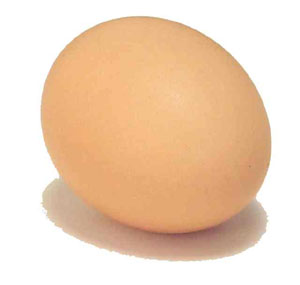| ||
Creation story
by Ari LeVaux Kaalehu, Hawaii, is the southernmost town in the United States. At America’s southernmost strip mall, I stopped at a little hole-in-the-wall for some hot sauce. Leaving, I noticed some eggs simmering in a crock pot. Mildly hungry and moderately curious, I asked if they were hardboiled eggs. “Simmered for 20 minutes,” said the lady at the counter. “They have a little chicken inside.” She explained that the fertilized eggs had incubated 16 days, long enough for a chicken to begin developing inside. She called it balot (pronounced “ball-oat”). A local guy with his kids, waiting for a family-sized order of balot to simmer, joined the lady at the counter hoping to witness what was to be each one’s first sighting of a haole eating balot. “Sip some broth,” said the guy, egging me on. “It tastes like chicken soup.” “OK.” She handed me a bowl with some salt in the bottom, a napkin and a balot. I peeled off the top of the eggshell and peered inside. It was brown and runny. Oh my god, what have I gotten myself into? I wondered. I’ve never backed down from a culinary adventure, but at this point I was feeling chicken. Nonetheless, I sprinkled salt on my balot and sipped some broth, which did in fact taste like chicken soup. As the egg’s broth level dropped, the developing embryo was revealed. “What about this other stuff,” I asked, deeply hoping I was supposed to just toss it. “Oh, you eat them too,” said the man. “Just chew them,” he said, watching intently. At this point, there were three items in the broth: the developing chicken itself, a yolk, and some egg white. Fortunately the chicken had yet to develop feathers, or crunchy bones. The embryo indeed tasted like chicken. Below the embryo was a misshapen yolk that tasted like normal hard-boiled yolk. Below the yolk, a white lump, shaped like a volcano and hard as plastic, with zero flavor. It turns out that balot came to Hawaii from the Philippines, where it’s usually made with duck eggs. Incubation periods range from seven to 21 days. Naalehu is both the southernmost point in the United States and America’s newest land. It sits on the youngest end of Hawaii’s youngest island, just off the subterranean hotspot that continues to splatter the earth’s molten inner juices into new land on an almost daily basis. With the taste of one of America’s newest chickens still in my mouth, we drove into Volcano National Park, home of Puuo’o, an active vent. Since I can’t pronounce Puuo’o, I call it “Pupu,” Hawaiian for appetizer. From the park’s entrance at 3,500 feet near Kilauea’s inactive crater, we descended through layers of jungle, desert and a cloud of sulfurous gas drifting from Pupu. At sea level, our route is blocked by a visitor’s center, constructed near where the road was buried by lava when Pupu first opened. It was almost dusk. A busload of Japanese tourists dressed like orange roadworkers tested their flashlights and ate bento box take-out before their night hike. We backtracked along the cliffs and bedded down on a rare patch of moss amidst the endless lava, which was sharp and crisscrossed with deep fissures that are hard to see in the dark. Below the cliffs, the dark sea crashed. I put my head where I could see Pupu’s bright red glow on the ridge. The glow danced in slow motion like the northern lights. I lay there and pondered the earth’s creation, how material from the depths created the surface. I thought about the simmered half-baked egg I ate for lunch, and couldn’t resist wondering, “which came first?” Clearly, it was an egg before it was a chicken. Well, maybe it was both egg and chicken all along. But the real question is: when does egg become meat? A fertilized egg is just a few warm days away from balot. Any egg laid by a chicken who has been socializing with roosters might be fertile. So when does meat begin? Certainly, untold numbers of so-called vegetarians have unwittingly eaten chicken embryos at the one- and two-day stages. Then I burped my 16-day balot. I tasted for sulfur. None. Perhaps you, too, have experienced that post-egg sulfur burp. The worst one ever was in Peru, when I ate a deviled egg at a fancy restaurant. Later that night I woke from a dream in which I was a lake in Africa that belched a cloud of gas and wiped out a village. I burped a foul sulfur cloud, went back to sleep and woke up sick. It turns out that the sulfur smell is released when iron from the yolk combines with sulfur in the white. You can see this in the green coating of the yolk in an egg that’s been boiled for too long. Any situation where eggs might be overcooked could be an opportunity for the sulfur burps. But the morning after my Hawaiian chick soup, I felt great, without a trace of sulfur – at least, not from the egg. Right before dawn, I looked up at the glowing ridge for maybe the 20th time that peaceful night. But this time, there was no glow. I couldn’t even see the ridge. When I stood up and started coughing, I realized that the wind had shifted, and Pupu’s sulfurous belch cloud had swallowed us. It was time to go. •
|
In this week's issue...
- May 15, 2025
- End of the trail
Despite tariff pause, Colorado bike company can’t hang on through supply chain chaos
- May 8, 2025
- Shared pain
Dismal trend highlights need to cut usage in Upper Basin, too
- April 24, 2025
- A tale of two bills
Nuclear gets all the hype, but optimizing infrastructure will have bigger impact


